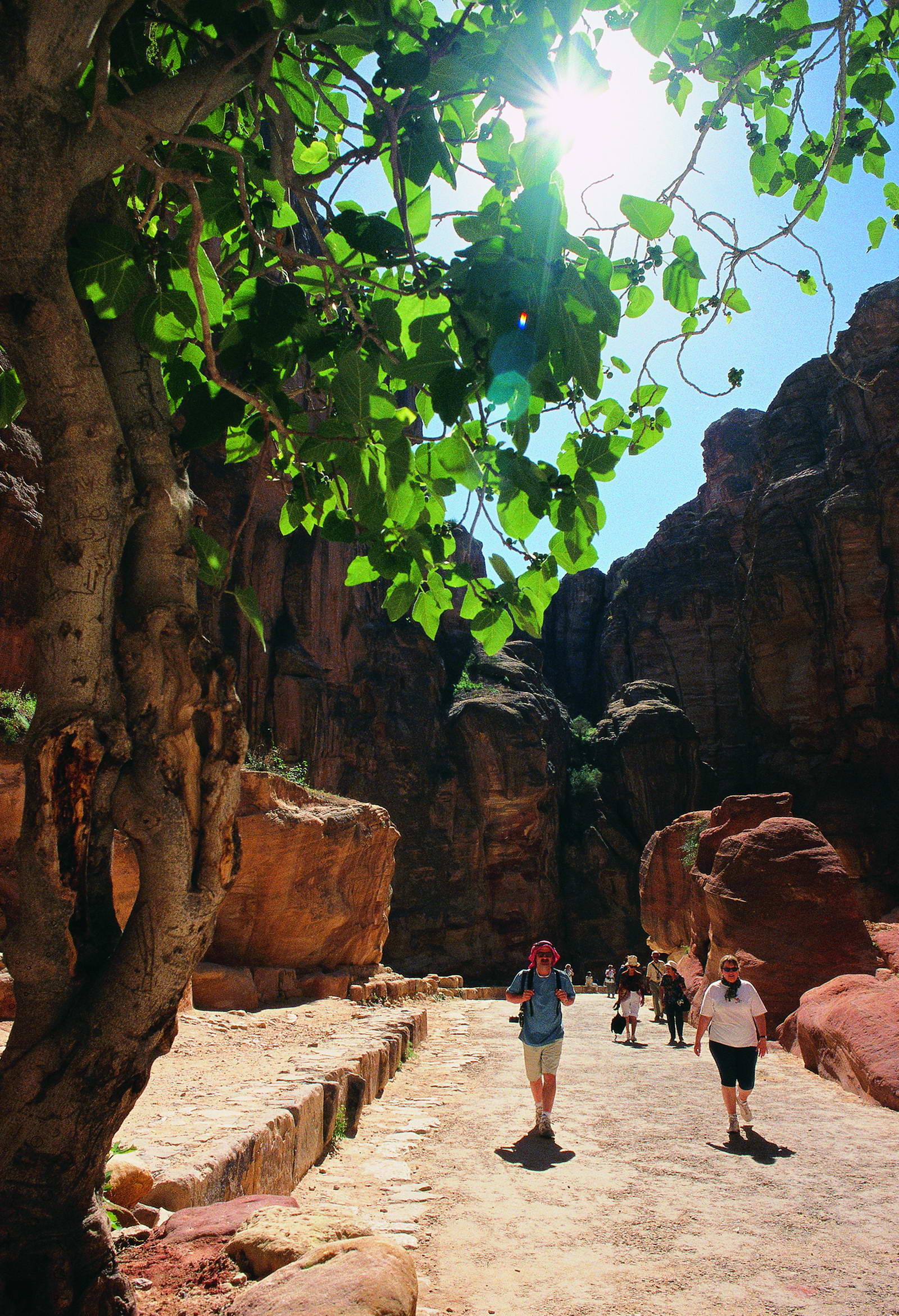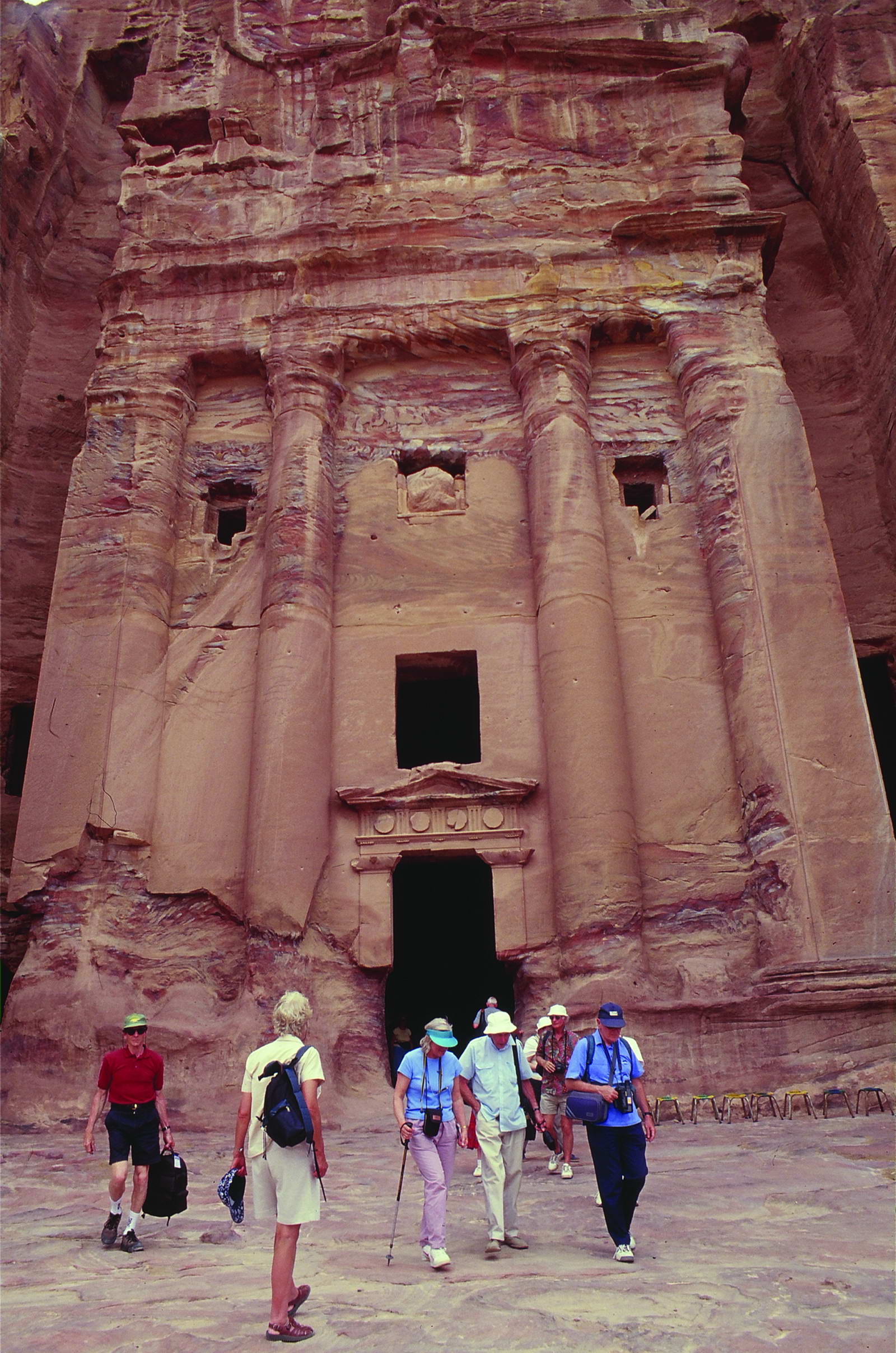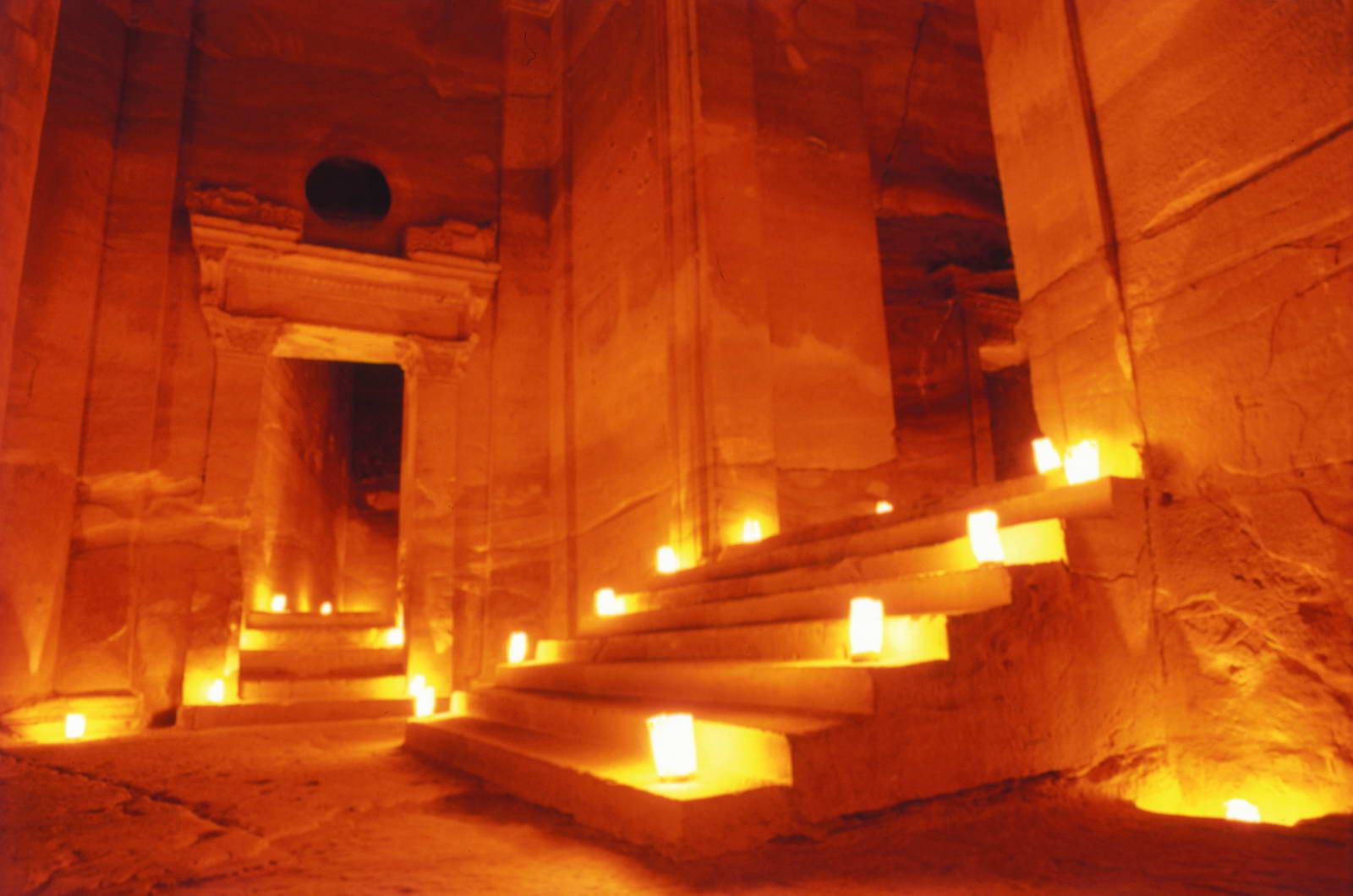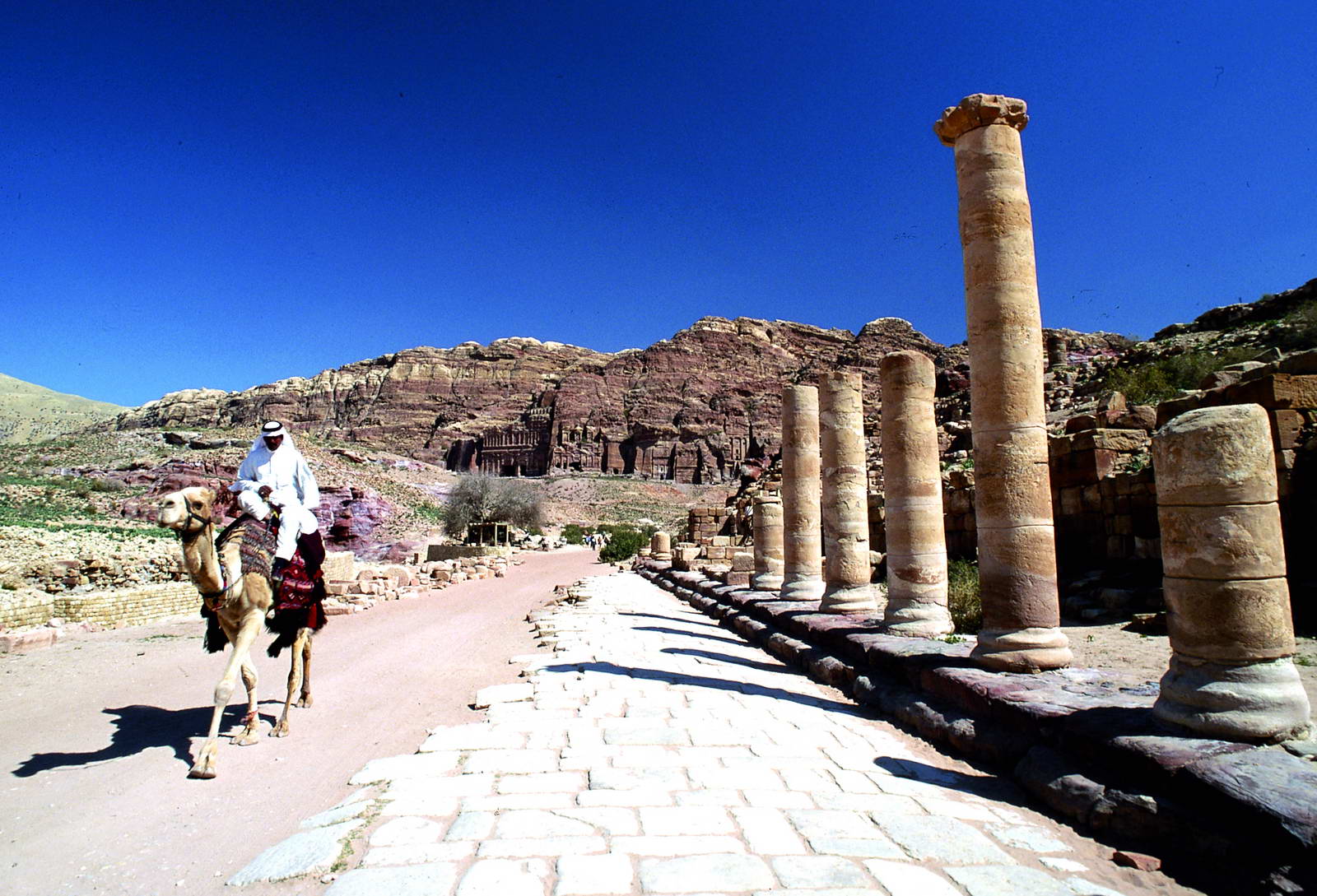Its majestic facade hidden behind huge rocks, approachable only by a small opening, this city built thousands of years back in the desert of Jordan still holds all the magic and mystery that its builders left behind - Petra of Jordan.It probably all began with water — a necessary ingredient especially in the desert.
With just six inches of rainfall in the year, the builders of this strange city managed to utilise the water with expertly designed engineering conduits that supplied water to 20,000 people and furthermore was capable of supplying water to any modern city of hundred thousand people today.
Water was collected in pools, cisterns and waterways, distributing water to the entire city. How did this nomadic tribe that built this city, which was the wealthiest cities of its time, accomplish such a difficult task? Archaeologists can only unravel the past of this city of stone with yet more study.

Petra means ‘rock’ in Greek and also comes from the Arab word ‘al-batra’.
Located 250 kilometers from the Jordanian capital Amman, it was the capital of the Nabataea Empire from 400BCE to 106CE. Being at the intersection of two important trade routes, one from western Asia and the other north from southern Arabia, it gave great opportunity to the astute rulers to collect taxes and further improve trade. They traded in textiles, incense, precious metals, ivory and spices in caravans on land and even on sea with the help of ancient sea vessels known as dhows.

This became possible also due to the fact that Petra offered passing merchants and caravans a chance to rest and fill their water supplies — at a fee of course! Not just this, but the Nabateans were supposed to have been good tax collectors on goods coming in from the Red Sea. Not to mention that they were not shy of plundering ships themselves at times.
By 100BCE they became quite wealthy by controlling the Arab incense trade and their great wealth increased their facilities, making Petra one of the wealthiest cities in the world.
Petra was first discovered in 1812 by a Swiss geographer Johannes L. Burckhardt, yet mystery about the origins of these Nabatean people remains. Before they came in the area it was inhabited by the Edomites (6000BCE) but it was the Nabatean people who carved this rose colored city.
These nomads, arriving from southern Arabia, were just like the gypsy traders roaming the rest of the world. So how did they manage to build such a magnificent city cut out of solid rock? Moreover, how could they have become such excellent town planners, engineers and expert stonemasons? Carving niches and doorways into solid rock faces, resulting into fascinating sculptures and great examples in architecture from tent dwellers?

The answer is not forthcoming. The reason for that is that these mysterious people have left no written records of their times, which is a really strange thing according to researchers as most of the advanced ancient civilizations have left some sort of written evidence of their culture like the Sumerian stone tablets, the Egyptian hieroglyph, etc. But no such thing has been left by the Nabateans.
Even more puzzling is the fact that these people were capable of writing, according to anthropologists and archaeologists, as ascertained by the many graffiti and carvings on the walls. So why not leave any written evidence of one’s glory or some record regarding one’s origins for the future?
Well, 2,000 years is a long time to make assumptions. But we do know that they were a secretive race. The biggest proof seems to be the way they constructed their city. A large metropolis reached only by a small opening in the rocks — a crack 1,200 meters long and just three to four meters wide, surrounded by tall canyons reaching up as far as the eye could see. Their history is probably much older but historians date them to 586BCE.

The majestic empire was also rocked by several earthquakes, which led to the empire’s decline. And then they suddenly disappeared into the unknown pages of history where they came from, leaving behind all this painstaking work!
The ancient name for Petra was Rekiem which also appears in the Dead Sea Scrolls. But the builders kept their trade secrets and all other information that they valued from the world.
Another puzzle to the whole scenario is the most magnificent structure that greets as soon as one comes out of the small entrance through the rock crevice. It is ‘The Treasury’ (so-called) because no other use could be found for it. It has no tombs, no evidence that any carriage ever passed through it or that any kind of records were kept here. If they were, none have been found.
So why this was intricately designed piece of architecture made?
It is a question still waiting to be answered. Perhaps these few lines from the award-winning poem by John William Burgon are the right way to describe this mysterious city.
“It seems no work of Man’s creative hand,
By labor wrought as wavering fancy planned;
But from the rock as if by magic grown,
Eternal, silent, beautiful, alone!
Match me such a marvel save in Eastern clime, A rose-red city half as old as time.”
